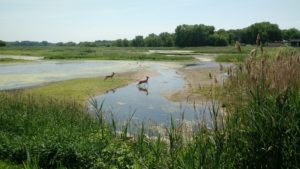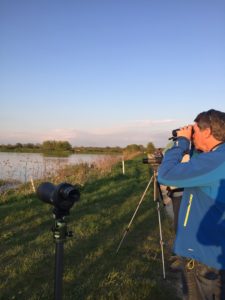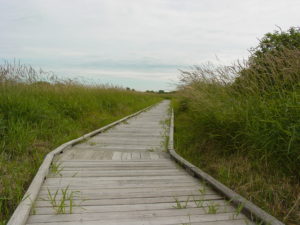The 140-acre Madison Metropolitan Sewerage District (the District) Wildlife Observation Area and Boardwalk is a unique unit within the Capital Springs Recreation Area.
Open to the public, three miles of trails traverse wetland areas and ponds for nature observation. Bird watchers especially enjoy the area as the ponds are managed to attract and support migrating shorebirds which feed on exposed mudflats.
It’s part of our vision to enrich the community by improving the environment and encouraging others to join us as partners in conservation.
The District is an important partner in conservation at Capital Springs Recreation Area, and the Friends value the District’s commitment to wildlife conservation and community environmental education.
→ The 2018 Wildlife Observation Area Brochure provides a map and details about the birds and other wildlife within the unit.
Features
In the western part of the observation part of the area, water levels are managed to provide excellent conditions for migratory shorebirds. During the spring and fall migratory seasons, water is pumped out of the ponds. This exposes the mudflats and their abundant food supply. The eastern zone contains a combination of open water and wetlands that attracts marsh birds and water fowl. Over 200 different species of birds have been documented at the site including a wide variety of shorebirds, hawks, and songbirds, some of which are rare in this part of the country. Over three miles of trails explore the area and provide excellent bird and wildlife viewing.
See the Wildlife Observation Brochure for further details regarding bird species seen within the Observation Area. See the fauna page for information about this and other birding hotspots in the park.
To Get There
The Observation Area and lagoons are located at 1610 Moorland Rd, Madison, 53713.
History
The area was formerly a storage lagoon for biosolids produced at the Nine Springs Wastewater Treatment Plant. The lagoons were decommissioned in 1994 and were reconstructed between 1999 and 2001 to provide for wildlife habitat and recreation. The District currently manages water levels to attract different species of shoreline, marsh, and water birds. The Madison Metropolitan Sewerage District is committed to public health and environmental protection, and these lagoons demonstrate the depth of that commitment.
Forty-two million gallons of wastewater are processed at every day. The complex assemblage of tanks, pipes, and equipment at the plant merely copies the way nature would decompose and biodegrade wastewater. Wastewater coming into the plant is first filtered and settled, then aerated as microorganisms consume the organic matter. Finally, it is treated with ultraviolet light to kill any remaining bacteria. Three main resources are produced through wastewater treatment: energy, fertilizer, and clean water. Methane gas is released through the treatment process, which is then used to power equipment at the plant. Treated biosolids are made into Metrogro, a rich organic fertilizer and soil conditioner, which is recycled to area farmland. Finally, the treated water is recycled to Badfish Creek, where it supports a diverse aquatic community.
For more information about Wildlife Observation Unit and other areas of Capital Springs Recreation Area, please see the Visitor’s Guide.


